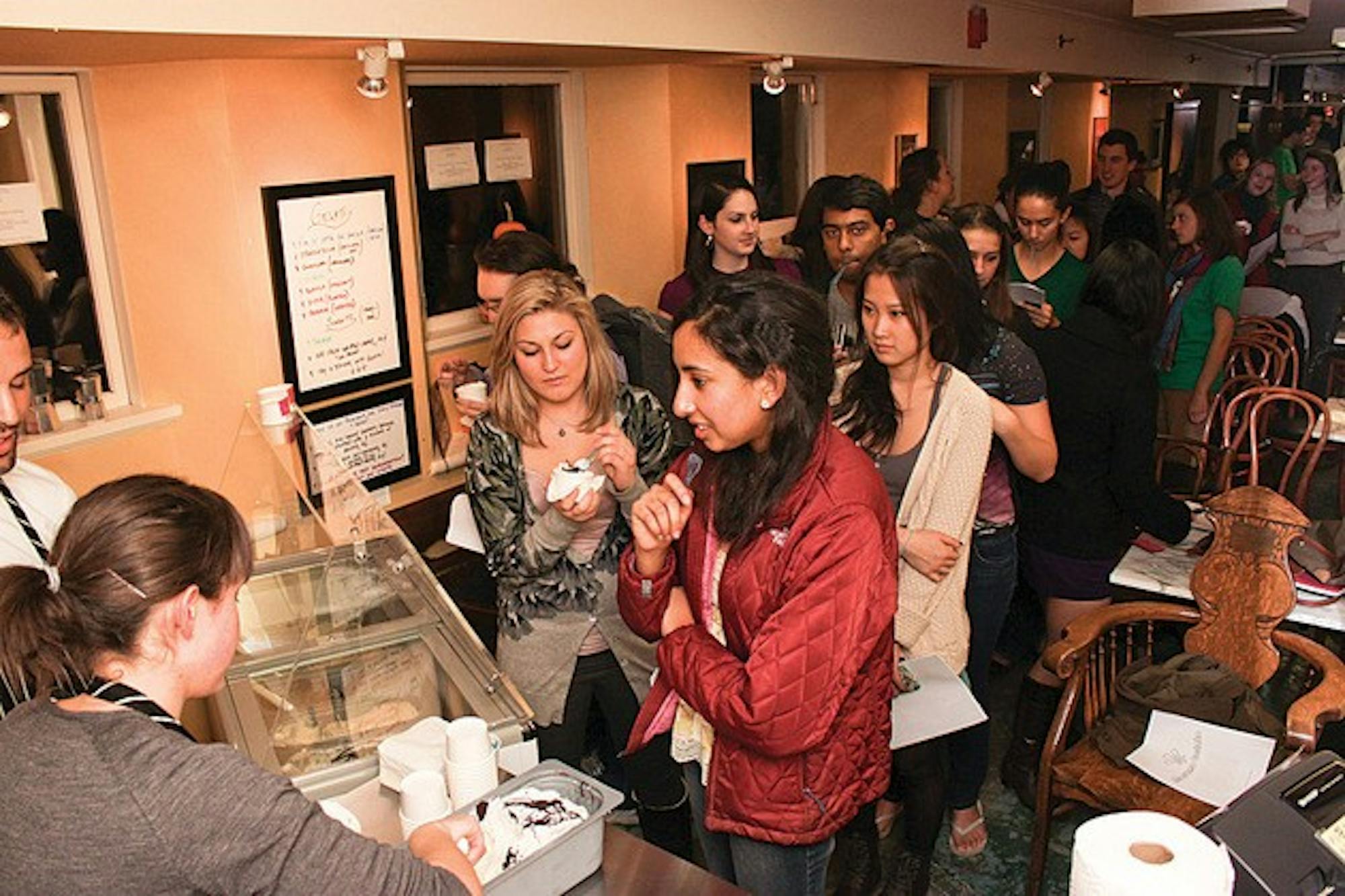Gelato an Italian form of ice cream that is denser and lower in butterfat than its American counterpart has become an increasingly popular fad in the United States, according to Morano.
Like many frozen desserts, gelato originated in ancient Rome and Egypt. Florence, Venice and Sicily are famous for their "modern day gelato," Morano wrote in a packet she distributed at the event.
Morano, who said she began making gelato at a Sicilian gelato shop during the six years she spent living in Italy, emphasized the importance of maintaining the old traditions of gelato-making throughout her demonstration.
While she "caters slightly to the American palate," Morano said she likes to produce Sicilian-style gelato using authentic techniques.
Because of gelato's soft consistency, conventional American ice cream scoops cannot be used to serve it, according to Morano. Instead, servers use a gelato "spade," shaped like a garden spade, to artistically scoop and "craft" the gelato.
Morano slowly and carefully weighed out the necessary ingredients for the flavors she made in her demonstration: banana sorbet and stracciatella, similar to chocolate chip.
"Gelato is temperamental, and any small changes to the recipe and ingredients will affect it," she said.
For the banana sorbet, Morano mixed fresh bananas with simple syrup and water. The stracciatella recipe included local cream, vanilla and water and a secret dry chocolate mix that Morano would not share with the audience.
Morano then fed the mixtures into her "prized possession," the Bravo Trittico gelato machine. Imported from Europe, the Bravo Trittico is the top gelato-making machine in the world, she said.
"The quality of my gelato comes from not only the recipes, but also definitely from the [Bravo Trittico] machine," she said.
The Bravo Trittico machine works using dual chambers, according to Morano. The first chamber pasteurizes and kills the bacteria in the mixture before the second produces the actual gelato.
Because the sorbet was non-dairy, Morano poured the mixture for the banana sorbet directly into the second chamber.
Gelato presentation has an important artistic element, Morano said. Although mass-produced gelato is packaged tightly into pints and quarts, fresh gelato should actually be lightly spooned into a container, to be further decorated with chocolate or ridges.
The 25 participants enjoyed both the banana sorbet and stracciatella gelato after the demonstration.
"I was just in Rome for an art history [foreign study program] last year where I had a lot of gelato," Sonia Rao '11 said after tasting the gelato. "The gelato here is definitely really similar and makes me feel like I'm back in Rome."
Morano Gelato remains popular with Hanover residents despite the arrival of winter, according to Morano.
"I think my gelato has been well received by the community," she said. "I'm honored, because it's something I love to do, and it's something I'm passionate about."
Anna Leah Berstein Simpson '13, who attended the demonstration, expressed a similar opinion about gelato's popularity.
"I think most people I know like gelato," she said.
Morano has a very loyal clientele who regularly visit her shop in Rosey Jekes, she said.
"She's very committed to the art of gelato and she works really hard," Morano's brother, Jordan Morano, said.




